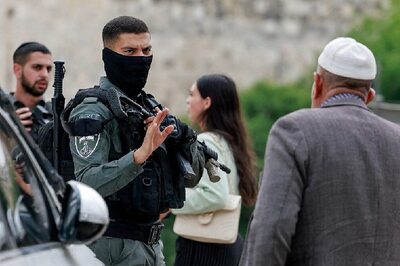
views
Even as Delhiites choked under a curtain of smog and particulate matter the day after the festival of Diwali, not app parts of the country did as badly.
This year, Delhi recorded “severe” air quality index (AQI) on November 15 with air quality touching 468 at 7 am in the morning, marking the worst Diwali in the capital in terms of pollution in the past four years. This, despite a government ban on the sale of crackers and several restrictions in place with respect to the coronavirus pandemic.
An AQI between 101 and 200 is considered moderate, 201-300 “poor”, 301- 400 “very poor” and 401-500 “severe”, while the AQI above 500 falls in the severe plus category.
READ: Delhi Air Quality ‘Severe’ Day After Diwali as Cracker Ban Violation, Stubble Burning Push Up PM2.5 Levels
Despite regulations, the police control rooms across Delhi recorded over 2,000 calls as residents complained against the others violating the ban on bursting crackers.
But not all cities behaved as badly.
Hyderabad
Andhra Pradesh and Telangana boasted of a dip in air pollution levels as compared to last year. Courts in both states had designated a specific hour for the bursting of crackers and had only allowed the sale and bursting of green crackers. With residents following restrictions, both states recorded a dip in pollurion levels as compared to Diwali 2019.Despite Ambient Air Quality (AAQ) spiking in Hyderabadon the evening of Diwali, Telangana State Pollution Control Board (TSPCB) noted a dip in as compared to last year.
Chennai
Diwali celebrations in Chennai were literally muted this Diwali as the city recorded lower air and sound pollution levels than last year. As per reports, Besant Nagar, one of the more popular parts of the city, recorded air quality index of 62 PM this year as opposed to 97 PM during last year’s Diwali season. The fall in pollution is being attributed to people adhering to calls against bursting crackers or just bursting green crackers if so.
Mumbai
Mumbai created a new record this year by recording the lowest level of noise pollution in the last 15 years on the first day of Diwali. According to reports, residents only burst crackers during permissible hours when the use of firecrackers was allowed.
Kolkata
The Air quality level was much better in Kolkata on the evening of Kali puja and Diwali on Saturday, compared to that on the festival day last year, as bursting of firecrackers was much less following a high court order, an official of the West Bengal Pollution Control Board (WBPCB) said. The Calcutta High Court had last week ordered a blanket ban on the use of fireworks in West Bengal during Kali puja, Diwali, Chhath and other pujas during this festive season to curb pollution amid the COVID-19 pandemic. In the previous years, only firecrackers that emit over 90 decibels of sound were not allowed by the WBPCB, and there was no ban on fireworks that emit light.
The poor AQI in Delhi was not because of lack of efforts.
Prior to Diwali, the National Green Tribunal (NGT) had imposed a total ban on sale or use of all kinds of firecrackers in the National Capital Region (NCR) from November 9 midnight to November 30 midnight. It had clarified that the direction will apply to all cities and towns in the country where the average of ambient air quality during November 2019 was in “poor” and above categories. But fireworks could be heard going off till later into the night on Saturday.
The Delhi Police arrested 10 people and registered 12 cases for sale of firecrackers in the national capital in violation of the ban.
Police also registered 14 cases for bursting firecrackers — four in east, seven in northeast and three in northwest districts — during the day and 12 people were arrested, Additional PRO (Delhi Police) Anil Mittal said.
But it seems when it comes to Delhi, a stricter implementation might be key. Because as far as Delhiites are concerned, following rules and simple common sense seem to be luxuries.
(With inputs from Agencies)
Read all the Latest News, Breaking News and Coronavirus News here




















Comments
0 comment